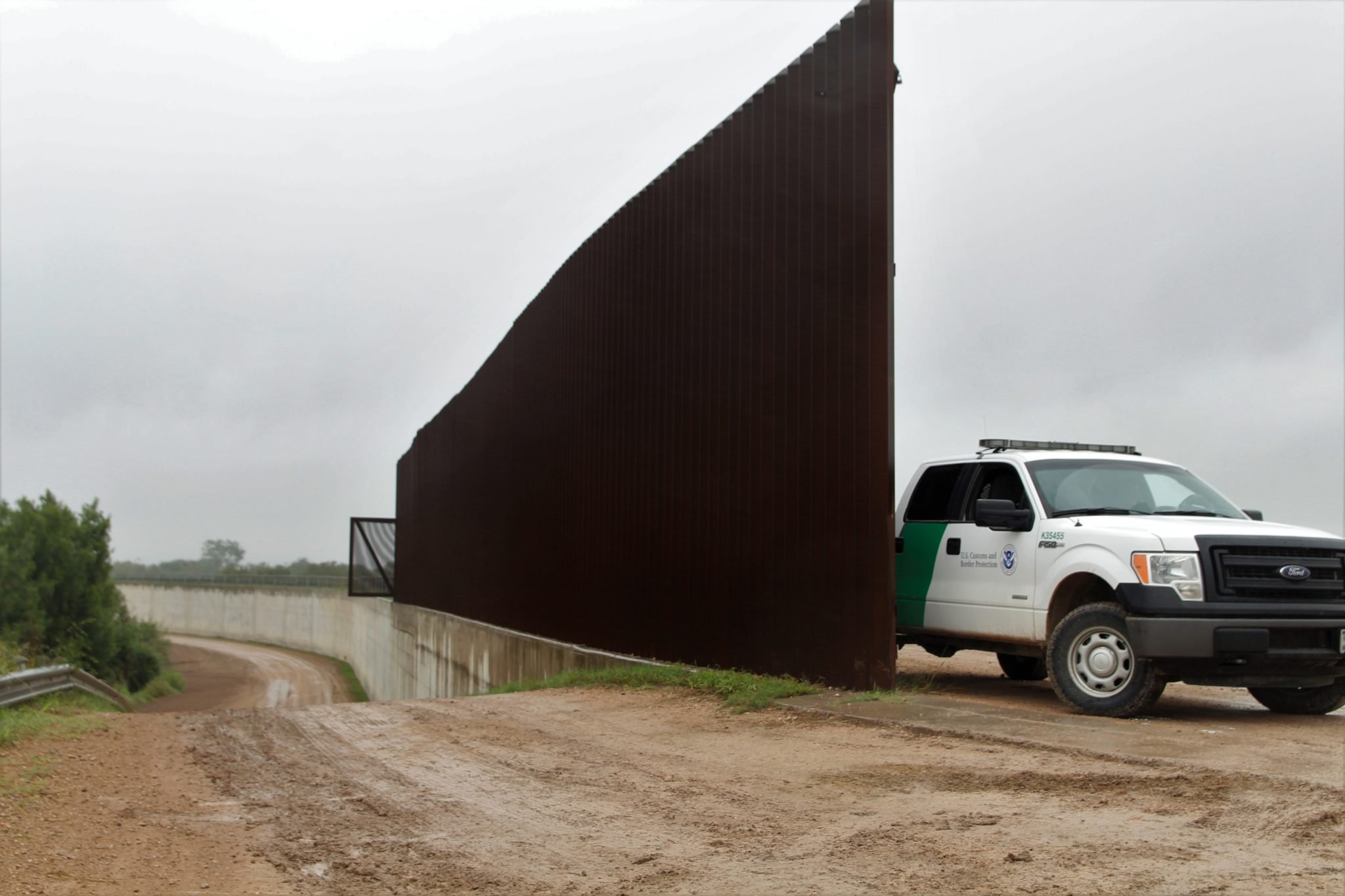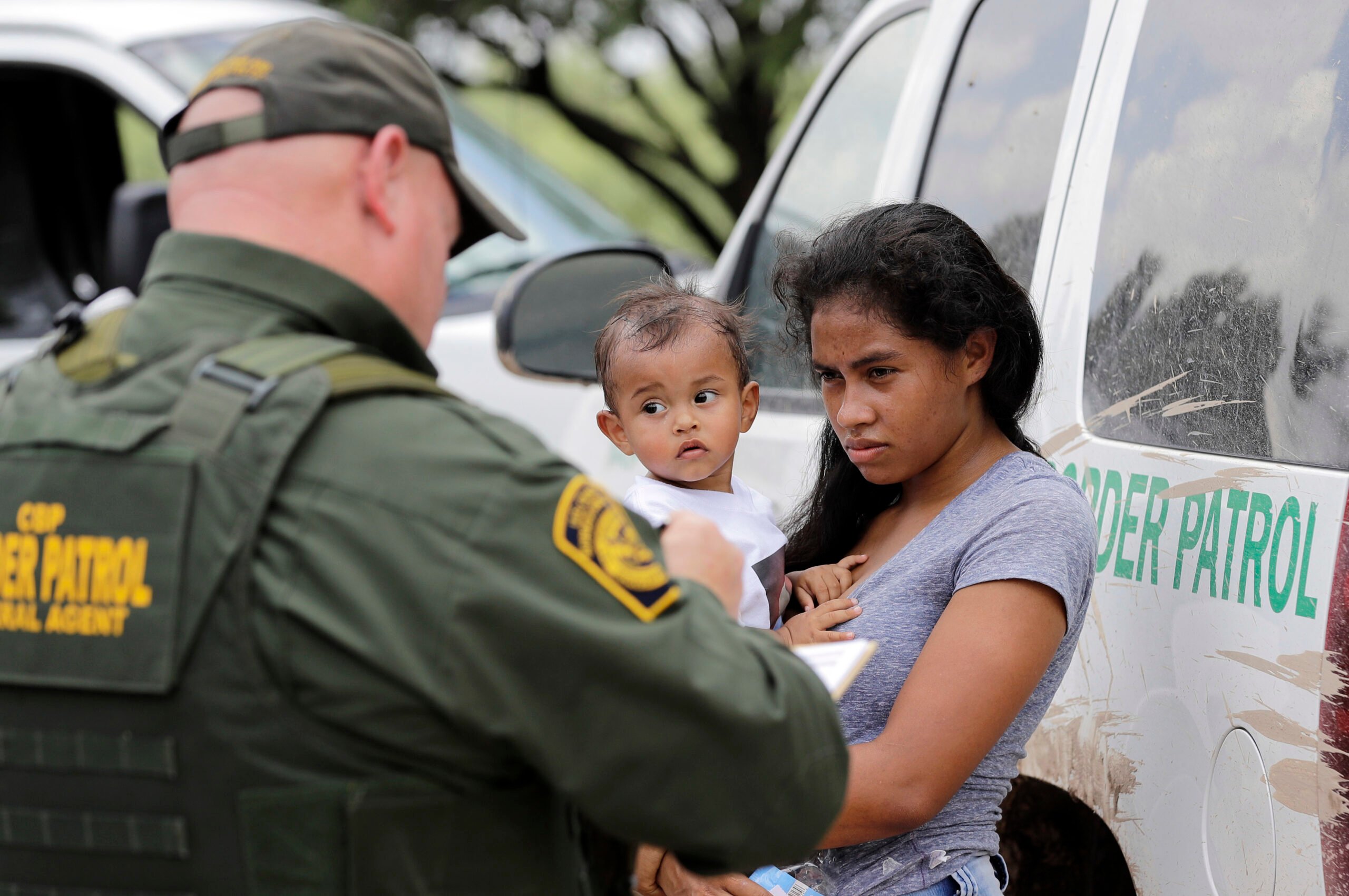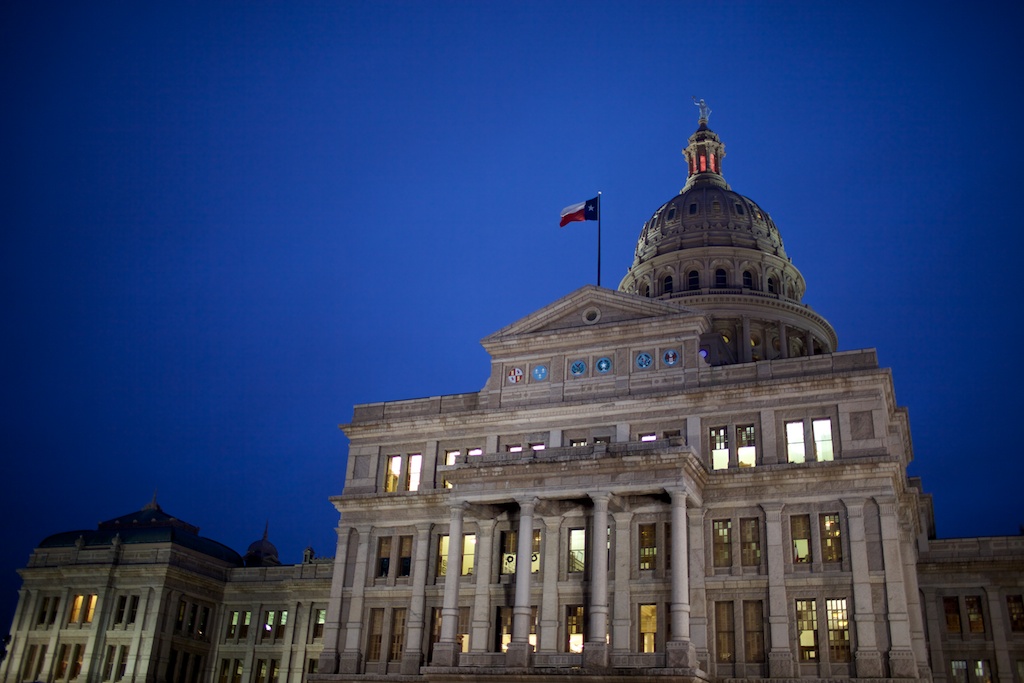
‘An Incredibly Conservative Budget’: A Guide to the Texas House Proposal
Though they’re having trouble finding money for child welfare, Medicaid and schools, lawmakers found $653 million to fund a state border security plan.
The Texas House on Thursday is debating a lean $218 billion state budget that falls far short of what’s needed to maintain the current level of services.
If this session is anything like 2015, there’ll be no shortage of shenanigans as lawmakers squabble late into the night over the more than 400 amendments. (In a particularly odd turn of events last session, lawmakers briefly began discussing the number of people with whom they’ve had sex.)
Though somewhat less callous than the budget the Senate passed last week, the House proposal still falls $14 billion short of the $232 billion that state agencies say is needed for schools, roads, public safety, health care and other basic needs.
The House proposes spending nearly all of the $104.9 billion that the comptroller said is available in general revenue, but that’s still a 3.5 percent reduction from last session’s $108 billion budget. Once inflation and population growth are accounted for, that reduction in general revenue spending leaves the state 11 percent short of where it should be, according to the Legislative Budget Board.
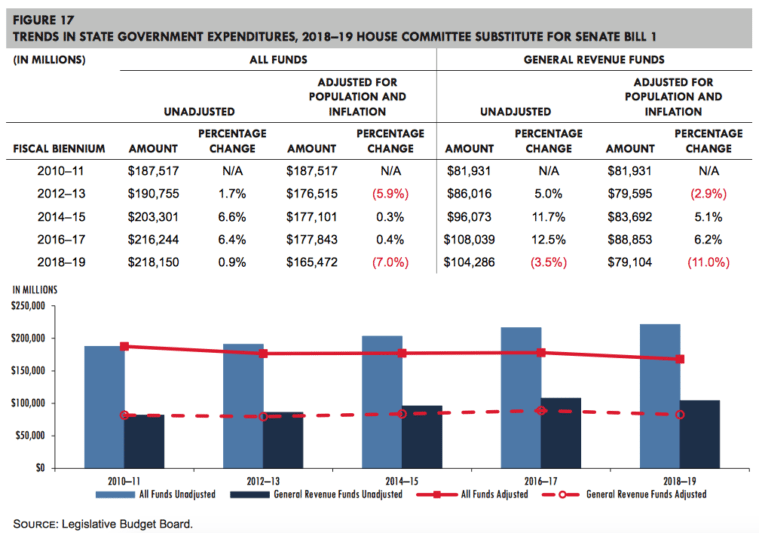
“This is an incredibly conservative budget,” Zerwas said while laying out the budget in the House Thursday morning.
Low oil prices haven’t helped the state, but the budget bind in which the Legislature finds itself is one of its own making. Lawmakers dug themselves into a $10 billion hole by cutting taxes and diverting sales tax to highways, slowing the state’s already limited revenue stream, according to Eva De Luna Castro, a budget expert with the Center for Public Policy Priorities (CPPP), a left-leaning think tank.
In 2015, the Legislature slashed the franchise tax — the state’s primary business tax and one of its largest sources of revenue — wiping out $2.6 billion available for the ‘18-’19 budget cycle. During the same session, the Legislature called for a constitutional amendment diverting up to $5 billion in sales tax revenue to highways rather than the services that the state was already funding with that money. Voters approved that amendment later that year.
Here are four other areas of the budget we’ll be watching today:
Child Welfare
Advocates say the budget is one of the most important pieces of child protection legislation this session, and they’re not wrong. In an agency that’s been plagued by legislative stinginess for more than a decade, this session promises a major boost to the Child Protective Services (CPS) system to address the ongoing crisis.
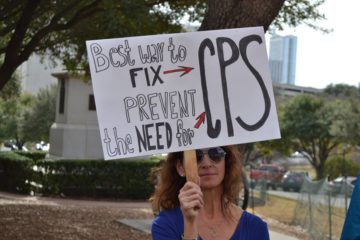
The proposed House budget funnels $621 million more to CPS than it did last cycle, bringing the Department of Family and Protective Services (DFPS) budget up to just over $4 billion for the next two years. The bulk of the increase goes to pay for hiring new caseworkers and maintaining last year’s $12,000 pay raises, as well as reimbursements for foster families and child welfare providers. The House’s supplemental budget, which passed without much discussion Thursday morning, allocates another $143 million to CPS for staff, foster care, day care and adoption payments.
Still, the increase is significantly short of the $1 billion that DFPS Commissioner Hank Whitman told budget writers he needs to get his agency back on track.
If this session’s bipartisan support for CPS reform is any indication, CPS should be spared any major cuts on the House floor Thursday. As a legislative priority for the governor, lieutenant governor and Senate Finance Committee, it seems no lawmaker wants to explain to constituents that they proposed sacrificing the much-needed services for abused and neglected children in order to save a few bucks. An amendment that passed early Thursday morning took about $43 million of unspent funds from the Texas Enterprise Fund, controlled by Governor Greg Abbott, and gave it to CPS and Medicaid.
Medicaid
As a handful of red states respond to the failed effort to repeal Obamacare last month by reconsidering Medicaid expansion, the Texas Legislature continues to tighten the purse-strings on its already lean state health program for the poor and disabled.
With a proposed $63.2 billion all-funds budget from the House, Medicaid makes up approximately one-third of the overall 2018-2019 budget, and covers about 4.1 million low-income Texans.
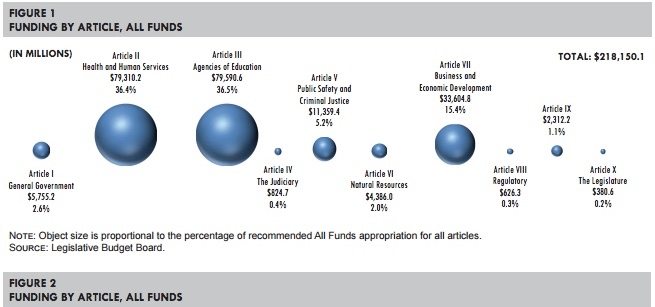
The House budget proposes a $2.4 billion reduction to Medicaid funding, largely without specific directives on where the reductions would come from or who would be most impacted. The bill seeks to reduce Medicaid spending by $1 billion in general revenue funds and $1.4 billion in matching federal funds by pursuing “flexibility” from the federal government. Additionally, the House’s proposed Medicaid spending takes into account enrollment growth but not rising costs.
The rider reducing state Medicaid funding by $1 billion in general revenue funds is intentionally vague, said House Appropriations Chair John Zerwas, R-Richmond, on Thursday. He said an amendment outlining what lawmakers don’t want to see happen will be discussed later in the day. Texas Republicans hope that having a “friendlier ear” in the Trump administration will mean more room for negotiation on how Texas can reduce state spending on Medicaid, Zerwas said.
Representative Sarah Davis, R-West University Place, acknowledged that “many members have questions about this rider,” but said it doesn’t call for provider rate cuts or eligibility restrictions.
The proposed House budget includes two other riders that further reduce the Medicaid budget: One that calls for cutting $111 million in state funds with 15 suggestions for savings, and another to reduce state funds for contracting practices by $450 million, according to a CPPP analysis.
Zerwas has said that services will not be compromised by these reductions, but Medicaid advocates worry that as tax cuts continue to lower revenue, the money to make up for the funding shortfalls may not be available.
The Legislature also has to deal with Medicaid underfunding from the previous biennium, 2017-2018. This year’s House supplemental budget provides $2.6 billion to Medicaid to make up for the shortfall through August 2017. The Medicaid funding cuts proposed for 2018-2019 would seem to set the state up for a similar situation in 2019, when the Lege convenes again.
Border Security and Wall
Though they’re having trouble finding money for colleges and universities, public schools and disabled children who rely on Medicaid, lawmakers found $653 million to fund a state border security plan. Border security funding includes $294 million for “routine border security operations,” $146 million for the 50-hour-a-week salaries of all DPS law enforcement officers, $133 million to fund staff including some Texas Rangers and troopers, $4.4 million for fuel and travel and $18 million for the Texas Parks and Wildlife Department to “enhance game warden activity,” according to the Legislative Budget Board.
The House budget proposal allots $2.3 billion toward the Department of Public Safety. Of that, $579 million is specifically for border security, which is $171 million less than the money allotted for border security in the 2016-2017 cycle.
The huge tranche of border security funding, $653 million, is still about $350 million short of the $1 billion DPS chief Steve McCraw told lawmakers he needed to secure the border. Critics, though, say the money would be better spent elsewhere and that DPS has failed to come up with clear metrics for success.
Despite representing all the border districts from Brownsville to El Paso, Democrats have been unable to block funding for a state border security apparatus. But some will try to chip away at the spending during Thursday’s debate. More than a dozen amendments were filed to roll back border security funding, by amounts ranging from hundreds of thousands of dollars to millions, including some by state Representatives Ana Hernandez, Celia Israel, Diego Bernal, Sergio Muñoz, Armando Walle, Philip Cortez and Oscar Longoria.

Israel, an Austin Democrat, filed an amendment that would block any state funding from being used to construct, facilitate or maintain a border wall in Big Bend Ranch State Park, and another to block money from being appropriated to “expand, construct, maintain or otherwise facilitate a border wall, fence or other barrier between the United States and Mexico.”
Abortion and Anti-Transgender Amendments
Amendments to the House budget include several calling for increased funding to the state’s Alternatives to Abortion program, which largely funds crisis pregnancy centers — organizations that counsel women against having an abortion. Several proposals call for an additional $17.5 million per year for the program, which would nearly triple the current funding level. Lawmakers propose redirecting this funding from other state programs, including the Texas Department of Agriculture, the Texas Parks and Wildlife Department and the Texas Commission on Environmental Quality.
State Representative Briscoe Cain, R-Deer Park, has filed some of the more controversial amendments expected to come up in the House’s budget discussion, including two that would prohibit the use of fetal tissue for research.
Cain also filed an amendment that would prohibit the Texas Department of Criminal Justice from funding “sex reassignment or gender identity transitioning” for inmates. State Representative Valoree Swanson, R-Spring, filed an amendment related to the ongoing “bathroom bill” debate that would prohibit funds from any state agency from being used to construct, reconstruct or reclassify a restroom facility, shower or locker room “to allow or enable a man to enter a women’s restroom facility or a woman to enter a men’s restroom facility.” These measures could force lawmakers to vote on proposed legislation that may not otherwise come to the House floor on their own merit (like the bathroom bill).
